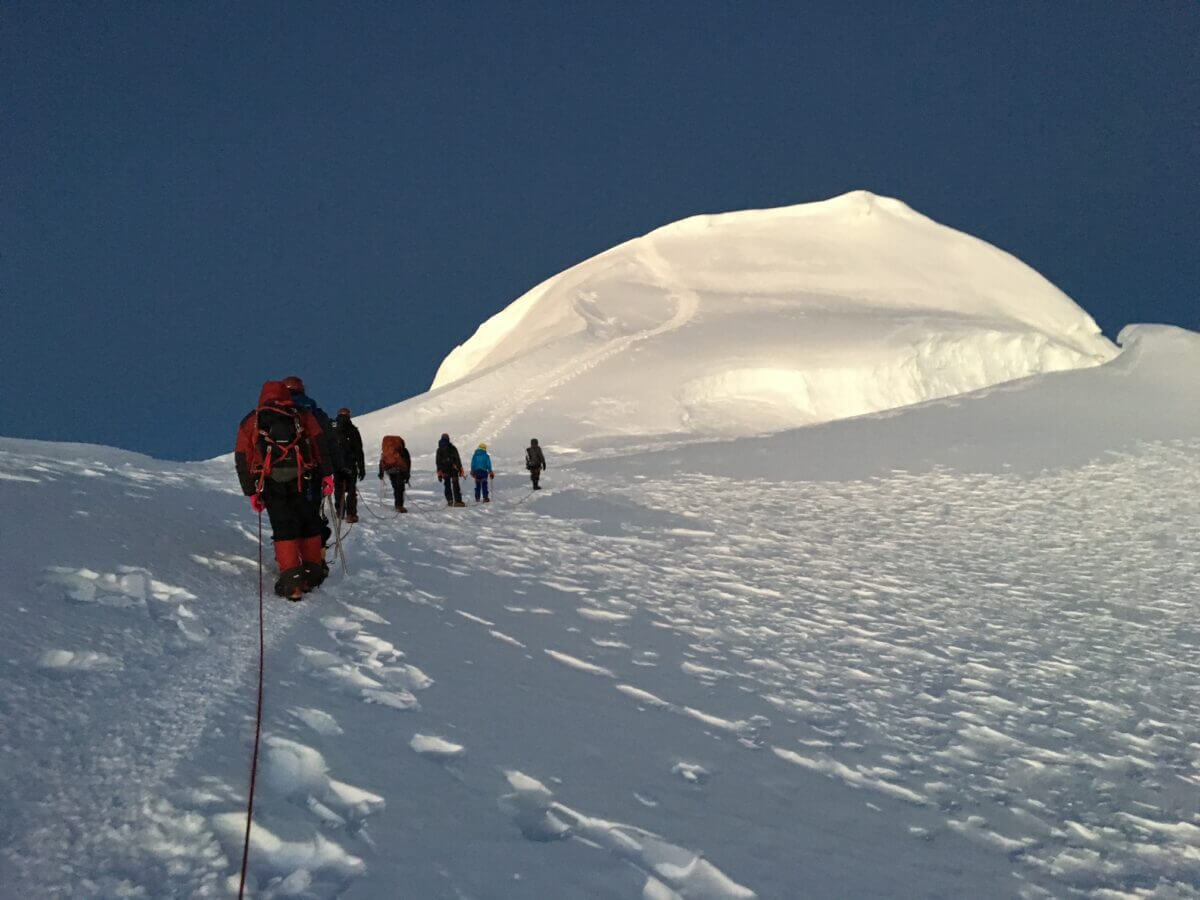
Deciding when to climb Mera Peak is probably the single most important decision you’ll make aside from preparing physically. The Himalayan weather is your largest ally/enemy, and it’s going to determine not only how nicely you spot and are secure, but also how relaxed and pleasurable your ride up the extraordinary Mera height is. Mountaineering: Technically, you may climb the mountain any time of year, from January through December! Realistically, there are positive times of the year when it’s prime mountain climbing season, and different durations when it’s far more challenging to reach the summit. Being aware of these seasonal characteristics is the secret to a rewarding and unforgettable trek to Mera Peak. This blog is going to explore the factors for you to decide when’s the best time for YOUR Mera Peak climbing holiday by examining the pros (and cons) of each season so you can make an informed choice that most aligns with both your personal expectations and attitude towards risk.
Freeze this: Autumn and spring.
The two most popular and best times of the year for Mera Peak climbing are Autumn( Sherpa months – September to November) & spring ( Sherpa months – March to May). They feature stable weather, little precipitation, and clear skies required for climbing on the world’s highest peaks. In autumn, the post-monsoon season is crystal clear with great views of those Himalayan giants that you have been walking below, Everest, Lhotse, and Makalu. It is hot enough to hike without layers, but it does get cold at night, especially up the mountains. Spring, though, fills the scenic vista with blooming rhododendrons and green valleys. The conditions also remain fairly consistent, though there is a hint of pre-monsoon cloud cover towards the latter stage of May. Rates of success are particularly high for both seasons, because it is such a good time to be there.
Advantages of Fishing in Fall (September – November)
People decide upon autumn for the Mera Peak Climb. The weather continues its reliable pattern of warm days down low, clear, cold nights up high. The season also hosts some of Nepal’s major festivals – Dashain and Tiha, to name a few, allowing youth to be part of local culture. The paths are better kept, less prone to mudslides and landslides. The main drawback is that it is the most popular time for trekking people-wise in the region, and really, all that equates to are crowded trails, teahouses, and departures to Lukla selling out months in advance.
Pros of spring (March to May)
Spring has its own taste as well and is highly demanded for the Mera Peak climbing trip. The rhododendron forest blooms at its peak in the course of the Spring and covers the foothills with a blanket of crimson, pink, and white glory. The whole trekking route seems to turn right into a garden with clean blooms and the appearance of warm weather. Longer days mean extra sunlight hours for trekking and acclimatizing, and in general, mountaineering conditions are of the highest quality. If the temperature does not get too cold, there will nevertheless be snow left on the higher peaks (from winter), which could slow you down a chunk but additionally provide you with that classic alpine putting. Spring is busy like fall, so book your safari as far ahead of time as possible.
The Good and Bad of Winter (December to February)
Because of the harsh conditions, these expeditions are only apt for experienced mountaineers and spirited travelers. Winter in Mera Peak is solitary and peerless. And the sky is uncommonly clear, with unencumbered views of the Himalayas. There are also fewer people on the trails — little in the way of real solitude to be found in peak season, but certainly less of a jarring contrast between hiking along a busy trail and enough total silence that it can startle. However, the challenges are significant. It’s very, very cold up there — even in summer — and snow is something you can count on any time of year. As days get shorter, the risk of avalanches and excessive winds is more pervasive. Anice’s ascent of the Mera peak summit is a proper mountain climb, and it ought be executed without a climbing guide and a full support team. This is not a climb for the green.
Monsoon Risks (June ‐ August)
Monsoon is the least favorable period for the Oera Peak trek, and this time is not suitable for many mountaineers. This is the season of rain where showers are constant and drench everything in sight, including the trail, turning it slippery as a greased hog, slogging shoe sucking bog like muck, and occasional puddles of impenetrable watery mud (landslides). Low, heavy clouds can cover the spectacular mountain views and thus defeat the purpose of the trip. There is a greater likelihood of flight delays and cancellations to Lukla. Even if the lower valleys are cloaked in brilliant green, aloft it can be punishing. Sure, the upside is that it is low season and hence now not many humans, but that doesn’t make amends for your safety issues or the reality that you’ll be disillusioned.
Seasonal differences in weather and Temperature
To certainly admire the difference between seasons, you have to understand what you’re missing in terms of temperatures and climate. Within the higher camps, sunlight hours temperatures may also range between 15 and -10°C depending on the season (maximum variety throughout spring/autumn). During the northern winter, the waterfall has days when temperatures hit well below zero, and at night, it plunges to -25°C or less on top of the ice field. Monsoon is hot and humid, warmer with significantly more rain. Knowing these changes is essential for packing rthe ight gear to carry out with and also to have a mental state of what you will see around before the trail towards the Mera Peak summit.
Planning for the Shoulder Seasons
For a compromise between peak, crowded times, and when most places may be closed for the season, try the shoulder months. The transition from May to late September kicks in. By late May, you may be just in time to catch one of the last groups of rhodes bloom, but you’ll also want to prepare for monsoon season. Through early September, the monsoon is frequently winding down and the air is clearing out; however, there is no guarantee that trails will not be muddy or slick. It’s glaringly much less crowded, and it’s a laugh to see the seasons alternate, but it also has some unpredictable climate you can keep in mind.
Flight and Teahouse Availability
The best Mera Peak seasons are also the busiest, and that may play into how you handle logistics. In peak trekking times like these, both Lukla flights and teahouse lodges can all be booked out months in advance. Both ways, ebook and plan your journey nicely earlier, or you’ll experience a sense of regret. If you do plan to hike in the area, however, it can be simpler to coordinate your travel dates or even discover a deal on flights or lodging. It’s a choice between comfort and protection, with height times presenting more of both.
Final Thoughts: How to Craft A Season Match Experience
When should you go to the Mera Peak Expedition? Though we’re often asked the question about when is best to head out on a trekking adventure up to Mera Peak, there is no simple answer – it’s very much down to personal preference and also your experience level, risk appetite, and even preferences for weather and view. For most climbers, the clear, calm weather of fall or spring is ideal for a successful but safe ascent. For the veteran tradesman, winter traderoutes offer solitude and trials with rich booty. The monsoon is, to be sure, but also tragic and spectacular in its way, something to fear. Conscious choice of these trekking terms for the Mera Peak climbing will help you to make your journey to its magnificent top a feat and adventure you’ll always remember.
